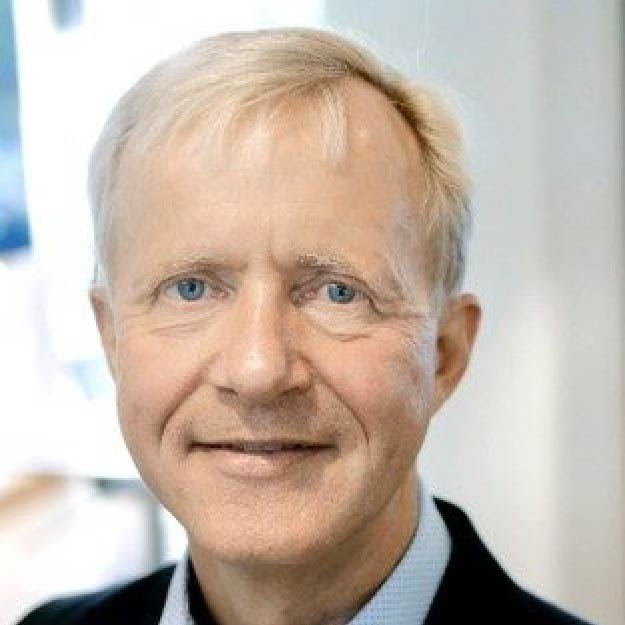Innovation
Think exponentially in your sustainability journey
January 8, 2021 | Written by: Anders Quitzau
Categorized: Innovation | Sustainability | Technology
Share this post:
If Denmark is to achieve its goal for 2030 of a 70 percent reduction in CO2 emissions, good intentions and small adjustments in business are not enough. Sustainability must be considered in all layers, and both business models, products and processes must be rethought based on environmental, ethical and circular parameters. The new technologies should help us a long way – and fortunately they are already here, just a mouse click away.
In order to be able to make climate-friendly choices, insight into and transparency about the impact of business decisions on climate and the environment is required. Today, this happens very rarely at an operational level – neither when suppliers are selected, transport is ordered, or customers are served. Traditionally, we have only made optimizations based on parameters such as customer experience, time, resource consumption and financial considerations. We have not had data and insights into the consequences of our decisions for the climate, the environment or social impact, and many companies still do not.
With new data types, such as GHG emissions per activity or component, combined with new pricing mechanisms, emerging standards for measurement methods such as Science Based Targets, with the addition of intelligent use of IT, it may be possible to take climate considerations into account in all parts of the company’s processes. And it can easily go hand in hand with good customer experiences.
Case-in-point: When online fashion companies work hard to create personalized recommendations and sizing guides, it’s not only beneficial because it helps customers find just the right clothes. It also helps to reduce the number of returns and thus the climate is spared from emissions from transport and disposal of damaged returned goods.
The ‘new’ exponential technologies can make a big difference
I consider exponential technologies as technologies where price and performance make it possible to solve today’s business problems in ways that were not possible or available before. Several of them have been here for years, but cloudification has made them much easier to access now – both financially and functionally. Some concrete examples are the use of artificial intelligence for fine-tuning advanced analyzes, which, among other things, enables complex optimization calculations that can predict climate risks through large data sets or recommend interventions in various processes. The Internet-of-Things connects the physical and digital worlds and can, with AI, automatically correct if something is not working optimally. I could continue with 5G, Edge, blockchain, hybrid/multi-cloud, augmented reality and virtual reality – and soon quantum computing. The opportunities already exist, it’s just a matter of exploiting them.
Value from combination and innovation
However, the greatest value is obtained when the technologies are combined. Let me give a few examples from my own world where the projects not only benefit the climate but also provide financial benefits:
Product life extension with the use of AI, IoT and drone-based conditions monitoring and maintenance means that Sund & Bælt expects the life of the Great Belt Bridge to be almost doubled. It saves 500.000 to 700.000 tons of CO2 while reducing maintenance costs by between approximately 1 – 1,5 million euros annually.
DID YOU READ: Why Smarter Roads, Bridges and Tunnels Are Good for Economies and Societies
Energy consumption in buildings can be reduced by up to 40 percent with IoT and AI, and a company like ISS is also working to develop many use cases to improve the user experience, such as a digital concierge and reduction of food waste in canteens. In addition, there is a saving in cleaning and maintenance of 20-30 percent.
These are examples from large companies, but as I said, the technology is so easily accessible in the cloud that even small companies can participate. Just take a successful company like Aguardio in Vejle. They have developed an IoT and cloud-based solution that reduces water consumption and thus CO2-emissions from showers. Very smart and efficient.
Think sustainability into everything, set goals and follow up
From the outset, we must take sustainability criteria into account when assessing and prioritizing digitization and business opportunities. If we do not do this, it can prove to be expensive in the long run. Very expensive.
By assessing our business model and processes on new parameters such as energy savings, resource consumption and circular opportunities for recycling, we can start designing new, green and intelligent work processes and new user experiences that also support and explicitly document corporate responsibility. For example, we work with sustainable design thinking, which integrates sustainability into the entire design process from stakeholder analysis and the first prototypes to the final design of a process, an app or a larger solution.
A study from the spring of 2020 shows that 80 percent of consumers – corona crisis or not – still place great emphasis on sustainability, and that banks and investors include this in their assessment of companies’ creditworthiness, and so on. In addition, in 2020 the WEF placed the five biggest risks for the world in the category ‘Climate and environment’. Thus, in the long run, it is about survival. For some companies about survival more in the short term than for others.
Think sustainability into everything, set goals and follow up
It is important to recognize that sustainability is about people and must be part of the company’s culture. Otherwise, the risk is that it will not be authentic. It is not only about the big complex processes, but also the small things that nudge the employees in everyday life. “Here we do not print unnecessarily”, “Last man turns off the light”, “Here we sort the waste”, participation in volunteer work, relevant alliances and NGOs. Everything helps to create an understanding of the significance of the task, and that everyone has a responsibility and a role.
And last but not least, clear, comprehensible goals must be set and followed up. According to a survey conducted by the Danish news media Finans, this is extremely difficult. It showed that only half of large Danish companies have set specific goals for their climate efforts. This is somewhat in contrast to a global IMD survey, where 84 percent of top executives have made the topic a significant part of their strategy and are either in the process of turning the company towards greater sustainability or plan to do so within a short time frame.
You get what you measure (read my blog for details), and in certain situations trust is good, but control is better. It is my belief that sustainability is one of them, and a really good place to start.
If you have any further questions, please do not hesitate to contact me at andersq@dk.ibm.com

Research & Innovation Executive, IBM Research - IBM Watson
Data Democratization – making data available
One of the trending buzzwords of the last years in my world is “Data Democratization”. Which this year seems to have been complemented by “Data Fabric” and “Data Mesh”. What it is really about the long-standing challenge of making data available. It is another one of these topics that often gets the reaction “How hard […]
How to act in the new regulation of financial sector
Our world is changing. Because of that regulators around the world are taking ambitious steps to improve the sustainability of the financial sector and guide capital towards sustainable economic activity. Especially in EU we are seeing a high level of regulations. These regulatory interventions present complex and sensitive legal challenges for financial sector firms, which […]
Private cloud or public cloud? New server technology offers more choice
In September, we launched the new IBM Power E1080 high-end server, for corporate use based on the new Power10 architecture, the Power E1080. The server can – among many other things – handle a large number of applications and workloads securely, at scale and with highest availability. Going into the spring of 2022, we will […]


